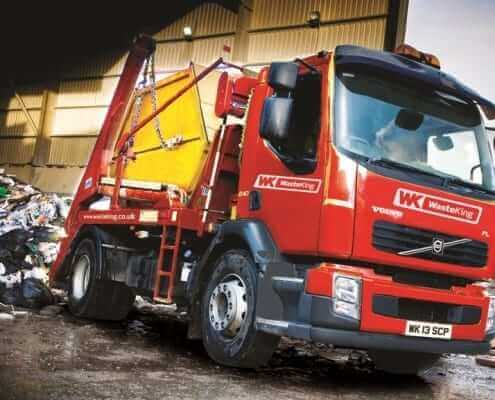
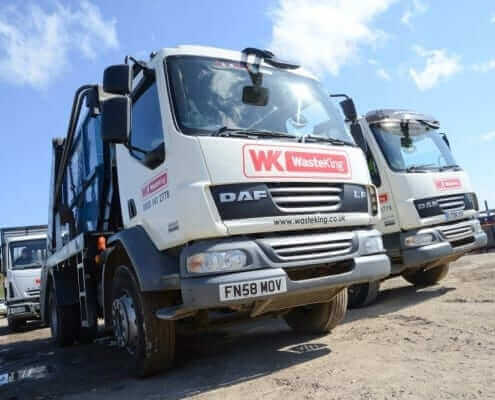
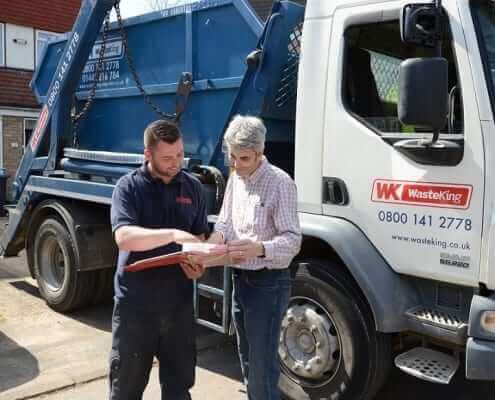
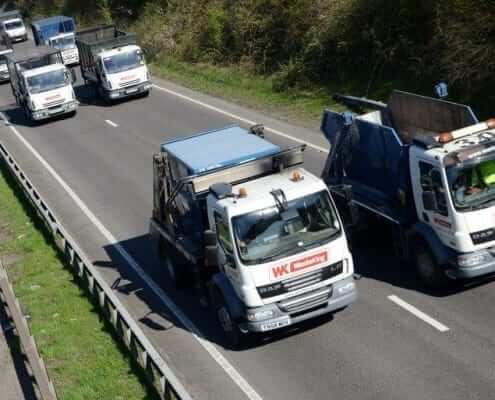
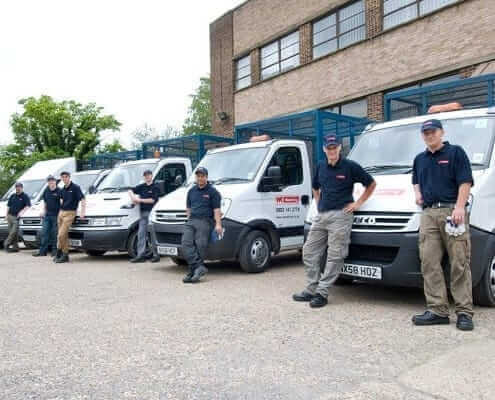
How to Load a Skip Efficiently
Are you looking for a way to quickly and efficiently load a skip? Look no further than Waste King Skip Hire! We’ve put together this comprehensive guide on how to load your skip in order to make it easier for you. Load your skip with ease by following our five simple steps, and then leave it up to us to take away your filled skip and recycle 100% of the waste. Get started now and make loading a skip a breeze with Waste King!
Step One: Organise
Layering is the secret to quickly and efficiently loading a skip. The skip will need to be filled with different items at different times. When it comes to filling the skip, organising your waste into these distinct categories will make the task much more straightforward. The four groups listed below should be used to group items.
- Flat items
- Tessellate objects (e.g objects that can be stacked together, such as bricks)
- Large or bulky items
- Loose debris
The size of any large items should ideally be reduced as small as possible. This can be accomplished by, whenever possible, disassembling these items into smaller components. For instance, a lot of furnishings can be broken down into individual pieces. Tables that are divided into a flat surface and four table legs will be much simpler to manage and take up less space in your skip and easier to remove.
Step Two: Flat items
It’s time to start filling the skip after you’ve taken apart your big items and organised your remaining items. The flat objects should be put in your skip first. These are materials that will cover the base and can be easily compacted by items on top, such as cardboard, wood, or plasterboard. Before putting any boxes in the skip, make sure they are flattened. If you have a lot of these items, you can also put them around the skip’s edges in addition to the base.
Step Three: Tessellate objects
The next item to go in should be something that fits together easily, like bricks. Attempt to fill the base with these items to produce a level surface. Use some foresight to leave a space that will work for some of your leftover items if you can’t evenly cover the base.
Step Four: Large or bulky items
Items such as furnishings or appliances should go into the skip next. These things should be divided into their smallest components, as was previously mentioned. Rather than attempting to stack everything at once, arrange the objects as best you can so that they form layers. Utilise every inch of the available space and attempt to make use of any crevices that other objects may have left behind.
Step Five: Loose debris
Loose debris should be placed last. Gravel, sand, or soil fragments are examples of loose debris. These are placed last because they will typically take up all the empty spaces left by larger items.
What comes next? Give Waste King Skip Hire a call! The helpful team at Waste King will take away the skip from your property once it is filled. The recyclable waste will then be retrieved and processed at our specialised recycling centre after your items have been transported there. In order to achieve our goal of recycling 100% of the waste we gather, we go through this process for each skip we remove.
Don’t waste any more time on how to load your skip – call Waste King Skip Hire today and let us take the hassle off your hands! We guarantee a fast, reliable, and eco-friendly service so you can enjoy a worry-free experience. Contact us now and get your perfect skip solution!
Skip Hire St Albans, Skip Hire Halifax, Skip Hire Oxford, Skip Hire Stirling, Skip Hire Northwich, Skip Hire Kettering, Skip Hire Plymouth

Unit 15 Hockliffe Business Park |
|




